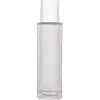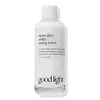What's inside
What's inside
 Key Ingredients
Key Ingredients

 Benefits
Benefits

 Concerns
Concerns

 Ingredients Side-by-side
Ingredients Side-by-side

Water
Skin ConditioningGlycerin
HumectantNiacinamide
Smoothing1,2-Hexanediol
Skin ConditioningBetaine
HumectantPanthenol
Skin ConditioningNelumbo Nucifera Leaf Extract
Skin ConditioningBambusa Vulgaris Water
Skin ConditioningSodium Hyaluronate
HumectantAllantoin
Skin ConditioningRaphanus Sativus Leaf Extract
HumectantAdenosine
Skin ConditioningCryptomeria Japonica Leaf Extract
HumectantSaccharomyces Ferment
Skin ConditioningGlyceryl Caprylate
EmollientBiosaccharide Gum-1
HumectantEthylhexylglycerin
Skin ConditioningPhytic Acid
Polyacrylate Crosspolymer-6
Emulsion StabilisingButylene Glycol
HumectantPolyglyceryl-10 Caprylate/Caprate
EmulsifyingPolyglyceryl-10 Oleate
Skin ConditioningPolyglyceryl-10 Laurate
Skin ConditioningEucalyptus Globulus Leaf Oil
PerfumingWater, Glycerin, Niacinamide, 1,2-Hexanediol, Betaine, Panthenol, Nelumbo Nucifera Leaf Extract, Bambusa Vulgaris Water, Sodium Hyaluronate, Allantoin, Raphanus Sativus Leaf Extract, Adenosine, Cryptomeria Japonica Leaf Extract, Saccharomyces Ferment, Glyceryl Caprylate, Biosaccharide Gum-1, Ethylhexylglycerin, Phytic Acid, Polyacrylate Crosspolymer-6, Butylene Glycol, Polyglyceryl-10 Caprylate/Caprate, Polyglyceryl-10 Oleate, Polyglyceryl-10 Laurate, Eucalyptus Globulus Leaf Oil
Water
Skin ConditioningGlycerin
HumectantLimnanthes Alba Seed Oil
Skin ConditioningCeramide NP
Skin ConditioningTremella Fuciformis Sporocarp Extract
AntioxidantNiacinamide
SmoothingSodium Hyaluronate
HumectantPanthenol
Skin ConditioningUrea
BufferingAllantoin
Skin ConditioningTocopherol
AntioxidantAvena Sativa Kernel Extract
AbrasivePelargonium Graveolens Flower Oil
MaskingRose Flower Oil
MaskingCitrus Aurantifolia Fruit Extract
Skin ConditioningHovenia Dulcis Fruit Extract
Skin ConditioningCitrus Limon Fruit Extract
MaskingCocos Nucifera Fruit Extract
EmollientOpuntia Ficus-Indica Fruit Extract
Skin ConditioningPyrus Malus Fruit Extract
Skin ConditioningPhenoxyethanol
PreservativePropanediol
SolventArgania Spinosa Kernel Oil
EmollientCanola Oil
EmollientHelianthus Annuus Seedcake
AbrasiveSodium Lactate
BufferingPolyglyceryl-10 Stearate
Skin ConditioningCarbomer
Emulsion StabilisingPentylene Glycol
Skin ConditioningXylitylglucoside
HumectantArginine
MaskingAnhydroxylitol
HumectantXylitol
HumectantCeramide AP
Skin Conditioning1,2-Hexanediol
Skin ConditioningMyrtus Communis Oil
MaskingFerula Galbaniflua Resin Oil
AntimicrobialThuja Occidentalis Leaf Extract
AntioxidantVanilla Planifolia Fruit Extract
Skin ConditioningRosa Canina Fruit Oil
EmollientCitrus Aurantium Bergamia Fruit Oil
MaskingOlea Europaea Fruit Oil
MaskingJasminum Officinale Oil
MaskingCitrus Grandis Peel Oil
MaskingPersea Gratissima Oil
Skin ConditioningCedrus Atlantica Bark Oil
MaskingLavandula Angustifolia Oil
MaskingEthylhexylglycerin
Skin ConditioningDisodium EDTA
Water, Glycerin, Limnanthes Alba Seed Oil, Ceramide NP, Tremella Fuciformis Sporocarp Extract, Niacinamide, Sodium Hyaluronate, Panthenol, Urea, Allantoin, Tocopherol, Avena Sativa Kernel Extract, Pelargonium Graveolens Flower Oil, Rose Flower Oil, Citrus Aurantifolia Fruit Extract, Hovenia Dulcis Fruit Extract, Citrus Limon Fruit Extract, Cocos Nucifera Fruit Extract, Opuntia Ficus-Indica Fruit Extract, Pyrus Malus Fruit Extract, Phenoxyethanol, Propanediol, Argania Spinosa Kernel Oil, Canola Oil, Helianthus Annuus Seedcake, Sodium Lactate, Polyglyceryl-10 Stearate, Carbomer, Pentylene Glycol, Xylitylglucoside, Arginine, Anhydroxylitol, Xylitol, Ceramide AP, 1,2-Hexanediol, Myrtus Communis Oil, Ferula Galbaniflua Resin Oil, Thuja Occidentalis Leaf Extract, Vanilla Planifolia Fruit Extract, Rosa Canina Fruit Oil, Citrus Aurantium Bergamia Fruit Oil, Olea Europaea Fruit Oil, Jasminum Officinale Oil, Citrus Grandis Peel Oil, Persea Gratissima Oil, Cedrus Atlantica Bark Oil, Lavandula Angustifolia Oil, Ethylhexylglycerin, Disodium EDTA
 Reviews
Reviews

Ingredients Explained
These ingredients are found in both products.
Ingredients higher up in an ingredient list are typically present in a larger amount.
1,2-Hexanediol is a synthetic liquid and another multi-functional powerhouse.
It is a:
- Humectant, drawing moisture into the skin
- Emollient, helping to soften skin
- Solvent, dispersing and stabilizing formulas
- Preservative booster, enhancing the antimicrobial activity of other preservatives
Allantoin is a soothing ingredient known for its protective and moisturizingg properties. Because of this, it is often added to products with strong active ingredients.
Studies show higher concentrations of this ingredient can promote wound healing.
Though it can be derived from the comfrey plant, allantoin is produced synthetically for cosmetic products to ensure purity.
Learn more about AllantoinEthylhexylglycerin (we can't pronounce this either) is commonly used as a preservative and skin softener. It is derived from glyceryl.
You might see Ethylhexylglycerin often paired with other preservatives such as phenoxyethanol. Ethylhexylglycerin has been found to increase the effectiveness of these other preservatives.
Glycerin is already naturally found in your skin. It helps moisturize and protect your skin.
A study from 2016 found glycerin to be more effective as a humectant than AHAs and hyaluronic acid.
As a humectant, it helps the skin stay hydrated by pulling moisture to your skin. The low molecular weight of glycerin allows it to pull moisture into the deeper layers of your skin.
Hydrated skin improves your skin barrier; Your skin barrier helps protect against irritants and bacteria.
Glycerin has also been found to have antimicrobial and antiviral properties. Due to these properties, glycerin is often used in wound and burn treatments.
In cosmetics, glycerin is usually derived from plants such as soybean or palm. However, it can also be sourced from animals, such as tallow or animal fat.
This ingredient is organic, colorless, odorless, and non-toxic.
Glycerin is the name for this ingredient in American English. British English uses Glycerol/Glycerine.
Learn more about GlycerinNiacinamide is a multitasking form of vitamin B3 that strengthens the skin barrier, reduces pores and dark spots, regulates oil, and improves signs of aging.
And the best part? It's gentle and well-tolerated by most skin types, including sensitive and reactive skin.
You might have heard of "niacin flush", or the reddening of skin that causes itchiness. Niacinamide has not been found to cause this.
In very rare cases, some individuals may not be able to tolerate niacinamide at all or experience an allergic reaction to it.
If you are experiencing flaking, irritation, and dryness with this ingredient, be sure to double check all your products as this ingredient can be found in all categories of skincare.
When incorporating niacinamide into your routine, look out for concentration amounts. Typically, 5% niacinamide provides benefits such as fading dark spots. However, if you have sensitive skin, it is better to begin with a smaller concentration.
When you apply niacinamide to your skin, your body converts it into nicotinamide adenine dinucleotide (NAD). NAD is an essential coenzyme that is already found in your cells as "fuel" and powers countless biological processes.
In your skin, NAD helps repair cell damage, produce new healthy cells, support collagen production, strengthen the skin barrier, and fight environmental stressors (like UV and pollution).
Our natural NAD levels start to decline with age, leading to slower skin repair, visible aging, and a weaker skin barrier. By providing your skin niacinamide, you're recharging your skin's NAD levels. This leads to stronger, healthier, and younger looking skin.
Another name for vitamin B3 is nicotinamide. This vitamin is water-soluble and our bodies don't store it. We obtain Vitamin B3 from either food or skincare. Meat, fish, wheat, yeast, and leafy greens contain vitamin B3.
The type of niacinamide used in skincare is synthetically created.
Learn more about NiacinamidePanthenol is a common ingredient that helps hydrate and soothe the skin. It is found naturally in our skin and hair.
There are two forms of panthenol: D and L.
D-panthenol is also known as dexpanthenol. Most cosmetics use dexpanthenol or a mixture of D and L-panthenol.
Panthenol is famous due to its ability to go deeper into the skin's layers. Using this ingredient has numerous pros (and no cons):
Like hyaluronic acid, panthenol is a humectant. Humectants are able to bind and hold large amounts of water to keep skin hydrated.
This ingredient works well for wound healing. It works by increasing tissue in the wound and helps close open wounds.
Once oxidized, panthenol converts to pantothenic acid. Panthothenic acid is found in all living cells.
This ingredient is also referred to as pro-vitamin B5.
Learn more about PanthenolSodium Hyaluronate is hyaluronic acid's salt form. It is commonly derived from the sodium salt of hyaluronic acid.
Like hyaluronic acid, it is great at holding water and acts as a humectant. This makes it a great skin hydrating ingredient.
Sodium Hyaluronate is naturally occurring in our bodies and is mostly found in eye fluid and joints.
These are some other common types of Hyaluronic Acid:
Learn more about Sodium HyaluronateWater. It's the most common cosmetic ingredient of all. You'll usually see it at the top of ingredient lists, meaning that it makes up the largest part of the product.
So why is it so popular? Water most often acts as a solvent - this means that it helps dissolve other ingredients into the formulation.
You'll also recognize water as that liquid we all need to stay alive. If you see this, drink a glass of water. Stay hydrated!
Learn more about Water